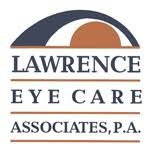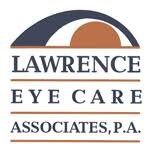What exactly is ophthalmology?
Becoming an ophthalmologist requires a medical degree and completing residency like other branches of medicine. Some ophthalmologists can undergo additional training if they choose and focus on a specialty within the field.
Ophthalmology training covers the entire spectrum of eye care. Ophthalmologists are trained to do thorough eye exams to prescribe glasses or contact lenses, offer medical treatment for assorted eye problems, and do complex and delicate eye surgeries for qualified candidates. They also take an active role in conducting scientific research on eye diseases and other serious vision problems. Ophthalmologists work to uncover causes behind these things and find cures.
An ophthalmologist is a licensed medical doctor, so they are permitted to practice medicine and surgery. This is different from an optometrist who focuses on performing eye exams, prescribing corrective lenses, and prescribing medications for certain eye diseases. Often, optometrists and ophthalmologists will work together to provide complete eye care for a patient.
Our Areas of Expertise
Cataracts
For most people, the natural lens of one or both of the eyes eventually gets cloudy, causing blurry vision. This condition is called a cataract. More than half of Americans develop cataracts or have had surgery to correct a cataract by the age of 80, according to the National Eye Institute. You might develop a cataract in one or both eyes, but it does not spread from one to the other.
Cataracts progress over time. If your vision is adequate, glasses or contact lenses might suffice to address your early-stage cataract and slightly impaired vision. However, if blurred vision is making you a dangerous driver, affecting your independence or compromising your ability to do the things you love, it might be time for cataract surgery.
Corneal Disorders
The cornea is the clear, dome-shaped outer layer of your eye. It is comprised of five layers. Each is responsible for a separate function. This collection of cells, fluids and proteins must remain clear and undisturbed in order for you to see well, and to shield your eyes from dust and germs. The cornea protects your lens and iris, and is responsible for about 70 percent of the eye’s focusing power.
Unfortunately, the cornea is susceptible to a range of disorders, which are collectively referred to as corneal disorders. The following are some common corneal disorders that can affect this sensitive and important part of the eye.
Keratitis
Dry Eye
Keratoconus
Corneal disorders can be frightening, but researchers have developed many treatments. If you have any symptoms of corneal disorders, call us today so we can discuss your treatment options.
Glaucoma
Glaucoma is an eye condition that is often characterized by an abnormally high intraocular pressure (i.e., pressure in the eye), which can ultimately damage the optic nerve. The added intraocular pressure is the result of fluid accumulation in the eye. If left untreated, it can result in complete vision loss.
Glaucoma may not produce any noticeable changes in your vision until the disease is more advanced. That’s why having regular eye exams starting at age 40 — or earlier for certain ethnic groups — is an important part of preventing loss of vision from glaucoma.
Currently, there is no cure for glaucoma. In addition, any damage to the optic nerve cannot be reversed. Once glaucoma has been diagnosed, though, several treatments including medicated eye drops and surgery are available. Treatments may slow the damage and prevent further loss of vision. If your vision suddenly becomes blurry and is accompanied by severe eye pain, nausea, headache, reddening of the eye or halos, contact your eye doctor or go to the emergency room immediately, as this may be a sign of vision-threatening acute angle-closer glaucoma.
Refractive Disorders
If you suffer from nearsightedness, farsightedness or astigmatism, you likely have a refractive error that causes light passing through your cornea to bend, or refract, improperly, resulting in vision trouble. Fortunately, with the proper glasses or contacts those troubles may be corrected.
One of the most important parts of your eye exam is the refraction; the part of the exam by which we determine whether you can be helped in any way by a glasses and/or contact prescription. It is also how we determine the best possible vision and function of your eye, which is essential medical information for us to have as we assess your eyes and look for any problems. It is NOT a covered service by Medicare and many other insurance plans. These plans consider a refraction a “vision” service not a “medical” service. Our office fee for refraction is $46.00 and unless your plan automatically covers the refraction charge, this fee is collected at the time of service in addition to any co-payment your plan may require. Should your plan pay us for the refraction, we will reimburse you accordingly.
As of the end of 2020 the Federal Trade Commission (FTC) enacted a rule requiring proof of receipt by the patient that a prescription was given to them unless the refraction during the exam was declined.
Adult Strabismsus
Strabismus, commonly known as being cross-eyed, is a disorder characterized by misaligned eyes. One eye looks in one direction while the other looks elsewhere. Those who suffer from strabismus may have double vision, trouble coordinating eye movements and poor depth perception. They may also be embarrassed by their appearance and avoid looking others in the eye.
Retinal Disorders
Retinal disorders are conditions that affect the layer of tissue at the back of the eye, known as the retina. This important part of the eye responds to light and passes on images to the brain. All retinal disorders affect your vision in some way, but some can also lead to blindness.
Disorders may include:
Macular degeneration
Diabetic eye disease
Retinal detachment

